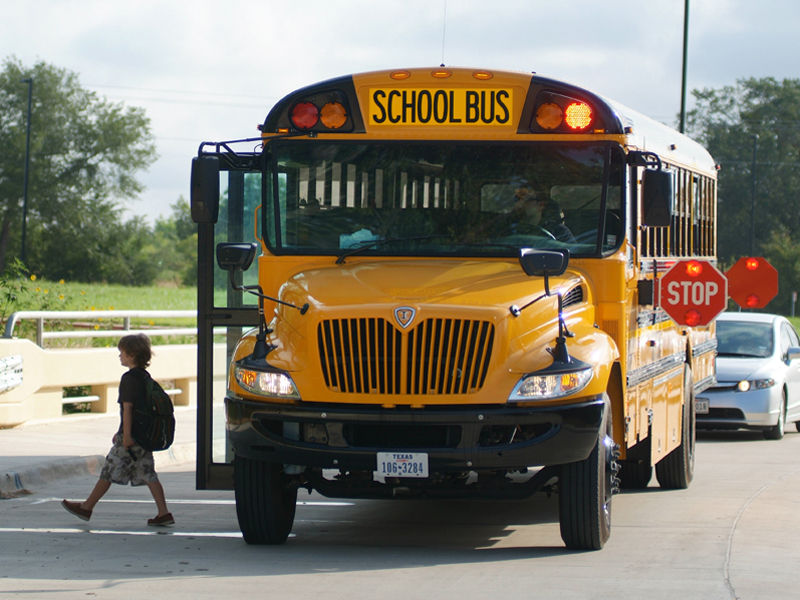 National School Bus Safety Week (Oct. 19–23, 2020) recognizes the importance of school bus safety with various activities aimed at teaching students how to be safer in and around school buses. The week also highlights ways roadway users can practice safer behaviors whenever they encounter buses on the roadway, helping to keep our children safer.
National School Bus Safety Week (Oct. 19–23, 2020) recognizes the importance of school bus safety with various activities aimed at teaching students how to be safer in and around school buses. The week also highlights ways roadway users can practice safer behaviors whenever they encounter buses on the roadway, helping to keep our children safer.
“Research shows that transporting children by school bus is the safest way to get them to and from school compared to other modes,” explains Texas A&M Transportation Institute (TTI) Senior Research Scientist Katie Womack. Womack heads up TTI’s Behavior Research Group in the Institute’s Center for Transportation Safety (CTS). “This year, COVID-19 has created new challenges for school districts in Texas and around the nation for safely transporting children.”
An informal CTS poll of school transportation directors in the Lone Star State reveals the extent to which safety on school buses — and, indeed, what that term really means in the era of COVID-19 — has risen to unprecedented levels. For example, ordinary cleaning techniques are a thing of the past. Cleaning the bus during the pandemic has become a pressing concern, since bus interiors house a multitude of touch points. All the districts that responded indicated they now use different cleaning techniques, and clean more frequently and thoroughly. Daily disinfection, thoroughly wiping all surfaces, and more elaborate measures (such as electrostatic sprays) are now commonplace, and hand sanitizer is now standard equipment.
“Cleaning frequency was reported by several districts as ‘after every run,’ and some reported that they clean their buses multiple times per day,” Womack notes.
Operations have also been affected. Seating configurations, for example, now commonly require one student per seat. Students sit near windows, and windows are left open; one district even reports they don’t run the AC. The seat behind the driver may also be kept vacant, and in one district, assigned seats are used in case contact tracing is needed. In another, student badges are scanned to track time on the bus for contact tracing. One district reported loading from back to front so students don’t pass each other in the aisle.
Social distancing requirements have affected different districts in different ways. Some need additional buses to transport students to observe distancing requirements, while others need fewer since many students are staying home and learning virtually or have adopted alternative in-class day schedules. A district in the Texas valley has turned its buses into a dual-purpose fleet that delivers curriculum materials and technology items to students’ homes, as well as cafeteria meals to over 80 distribution sites around town. The district uses 20 of its buses to expand Internet access in areas where access is limited.
How are drivers affected? Every district that responded said drivers are required to wear masks. Drivers undergo temperature checks, and some districts also administer them to each student boarding a bus. Some districts are experiencing driver shortages, a result of resignations or exposure to the virus, necessitating extended time off to deal with the illness.
It’s worth noting that safeguarding the health and safety of school bus riders and drivers often translates to increasing transportation costs for districts. Budgets must now accommodate the need for on-board electronic (touchless) thermometers, hand sanitizer dispensers, disposable gloves, masks, wipes, additional time for cleaning, and industrial disinfectants. Fewer students on buses equals fewer student miles, which is how state reimbursements to districts are calculated.
“National School Bus Safety Week is an opportunity to salute the school bus transportation providers across Texas and the nation as they continue to deliver the safest ride on the road,” Womack says. “During these especially challenging times, recognizing their contribution to keeping our children safe and raising awareness of school bus safety have never been more important.”